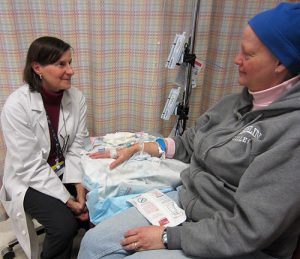
Cancer diagnosis and care are complex. When comorbid conditions, multiple medications, changing physiology and decreasing resilience are involved, they present further challenges for many patients and their cancer specialists. How can they treat a serious disease while minimizing the risk of mortality, side effects, and diminished quality of life?
The good news is that people generally are living longer. The downside is that with increased longevity comes increased odds of developing various forms of cancer. In the U.S., 50% of all malignancies occur in people ages 65-95, according to this article in the journal The Oncologist.
With the increase in the older population, it is expected that 60 percent of all cancers will be detected in elderly patients in the next two decades. As Scientific American reported, “the elderly — especially the very old — are the fastest-growing group of cancer patients in the U.S.”
Older adults are more likely to die from toxic side effects of chemotherapy and other treatment, according to a new tip sheet by reporter Jeanne Erdmann. And, they’re underrepresented in clinical trials that assess cancer treatment efficacy.
While almost all older adults have some form of Medicare, Medicare Advantage or are dually eligible for Medicare and Medicaid, they also are more likely to have a limited budget, live on a fixed income, or both, according to Cancer.net. The cost of treatment can be very expensive, depending on the type of cancer, the drug(s) involved, and other variables that include length of treatment and whether or not surgery is involved. Even just getting to a clinic or hospital can be a problem for those who no longer drive.
As with other patients, regardless of age, treatment (or not) must begin with asking the patient about his or her goals, Erdmann wrote. For some, quality of life matters more than quantity. Others may want to live long enough to attend a special event or witness the birth of a grandchild.
Oncologists, surgeons, patients and families must consider multiple, often complex scenarios when assessing options. There are anticipated and unforeseen complications, ranging from lack of social support to increased fall risk.
Then, there’s the challenge of pain management. Drugs are metabolized differently in older bodies. Side effects can be more severe. Symptoms may be misdiagnosed. As Erdmann notes in her tip sheet, the International Society of Geriatric Oncology (SIOG) recommends oncologists perform a complete geriatric assessment to help guide cancer treatment and pain management. It’s usually not a routine part of care but should be.
Anyone planning to write about cancer and older adults will find a wealth of information in this tip sheet, including numerous resources to quickly bring you up to speed on issues, challenges, treatment options and data you can incorporate into your reporting. There’s also an excellent list of experts who can help you navigate through this increasingly important health issue.






